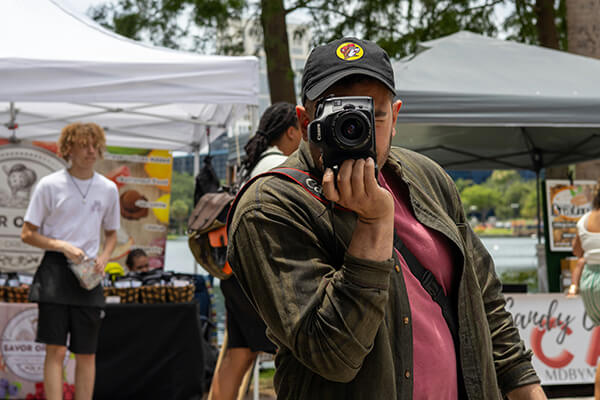When you host an event, in addition to fleshing out the details of the day's event, you also need to think futuristically about how you'll share the story about the event and your local church overall via promotional assets.
Out of abundant care, you want to acquire permission to use any photographs, video or audio captured during an event. Individuals may have sensitivities to and safety concerns surrounding your church using their likeness in marketing efforts. This concern is particularly significant when images are of people under 18.
To follow are action steps you can consider:
Crowd release statements
The easiest way to get permission is by prominently posting a crowd release statement throughout your event.
This public statement lets attendees know that your church is capturing photos, videos and audio during the event and that by participating and being on the grounds, they understand that their likeness may be captured and used in marketing and publicity efforts on behalf of your church, about the event, and event sponsors (if applicable).
Print and place all statements/signage well before your event to ensure you can target everyone who arrives. Determine sign size, color and font to ensure legibility.
Post the notice at check-in tables, all entryways and doors. Sign locations must be highly visible without obstructions. Take photos of all signage placements and file them to be accessible should you need to show proof of posting.
Consider creating lawn signs that you can use outside around the grounds. These signs are ideal for outdoor events. However, they can serve well as public statements for indoor events when placed to be visible to people coming in from a parking lot or public sidewalk out front of your church.
A crowd release typically is more eco-friendly, budget-conscious and requires the least staffing during the event. When you use a general statement that applies to any event, you can create laminated signage and lawn signs to reuse in the future.
Printed releases
You can opt to have printed statements instead of, or in addition to, a public statement. Upon entry, all persons 18 and older must sign your release document before entering the premises and attending the event.
Choose the most manageable option for your event team and volunteers to implement. Trusted practices include:
- Individual permission sheets - This method requires printing individual release statements with signature space at the bottom that you'll have signed by all attendees of age. The economic, workload and green impact will be greater with this choice.
- Document stack version - Have your statement serve as a cover page followed by pages of lines for grantee signatures. (This version can be more manageable than individual sheets and mindful of creation care concerns.)
- Targeted use releases - You may also choose to have a stack of printed releases for signing by specific attendees whose images you know you will use. For example, in the event of a children's choir performance, have the parents/guardians sign permission in advance or on-site.
For the printed examples above, plan to have a few additional copies of the consent form should someone want to have it for reference. To reduce paper use, encourage people to take a picture of the release instead of grabbing a printed version.
Ticketing and registration notices
A ticketed event offers another opportunity for you to provide a crowd release statement to attendees.
- Paper tickets - When printing paper tickets, include your statement on the back of the ticket. (If space is available, and you need to keep to one-side printing, add a blurb at the bottom of your ticket.)
- Online registration/ticketing - E-ticketing provides a couple of placement options for your statement.
- Post it on the event landing page by or under your "purchase" or "submit" button that notes that: "by purchasing a ticket/registering, attendees give their consent. . ."
- Include the statement at the bottom of the confirmation email and/or electronic ticket.
No matter your release statement(s) of choice, especially if you are developing statements that you will use repeatedly, you may wish to have them reviewed by a lawyer to ensure it has accounted for all that you need.
Securing permissions allows you to confidently move forward in your marketing efforts, such as media pitches/outreach, social media posts, website placements, podcasts and printed materials.
At first, it may seem overwhelming to capture these permissions, but choosing a delivery method that works best for your team will help simplify and reduce stress related to the process. Plus, your event preparations can save you time and future headaches.
To help you begin, use this starter statement and customize it to meet your local church’s needs.
Brenda Smotherman is the lead of public relations at United Methodist Communications and assists in sharing stories of United Methodists putting faith into action and provides publicity support for matters surrounding The United Methodist Church denomination. She has a combined history of 30+ years of experience in marketing and publicity. Smotherman lives in Tennessee with her husband and two rescue dogs.

